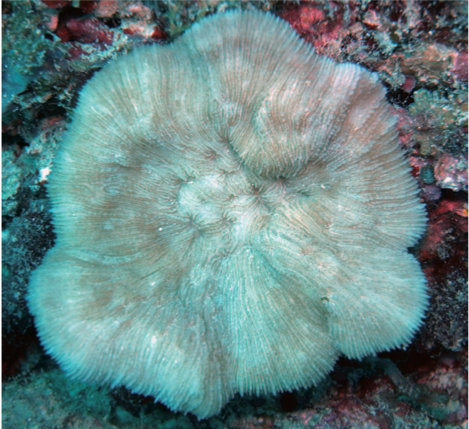Sandalolitha boucheti is a new species of Fungiid stony coral that demonstrates the need for more basic coral species research and surveying. Seems like every week we have new species of reef fish being described but it’s much less often that we get to gawk at papers of newly described species of stonies. So far Sandalolitha boucheti is only known from the Sulawesi Sea of Northeastern Borneo and West Pacific near Vanuatu and although this is not where corals are normally collected for the aquarium trade, we can think of a few oddball coral we’ve seen from Borneo and Indonesia which look vaguely like this species.
Like other Fungiids, Sandalolitha boucheti is approximately disc shaped when small and attached, but becomes detached and free-living later in life. The colonial Sandalolitha boucheti has multiple mouths like other species of Sandalolitha, but more subtle features and a less robust, thinner skeleton. Sandalolitha boucheti has mouths evenly distributed on the surface like S. robusta whereas in S. dentata the mouths are concentrated near the center and its septa are all similar in size whereas these are alternating in the other two species of Sandalolitha.
Sandalolitha boucheti may not get your heart rate up in these few single images of living and skeletal specimens but who know what other colors this species may develop, perhaps a crazy orange and green color form is out there like some of the wild Cycloseris. If not, at least we now have at least one more species to consider when trying to identify that weirdo cryptic stony coral that came in on the live rock or mushroom anemone rock.
Sandalolitha boucheti is described by Bert Hoeksema in Zoosystema : Mushroom corals (Scleractinia, Fungiidae) of Espiritu Santo (Vanuatu, West Pacific) with description of a new species.





